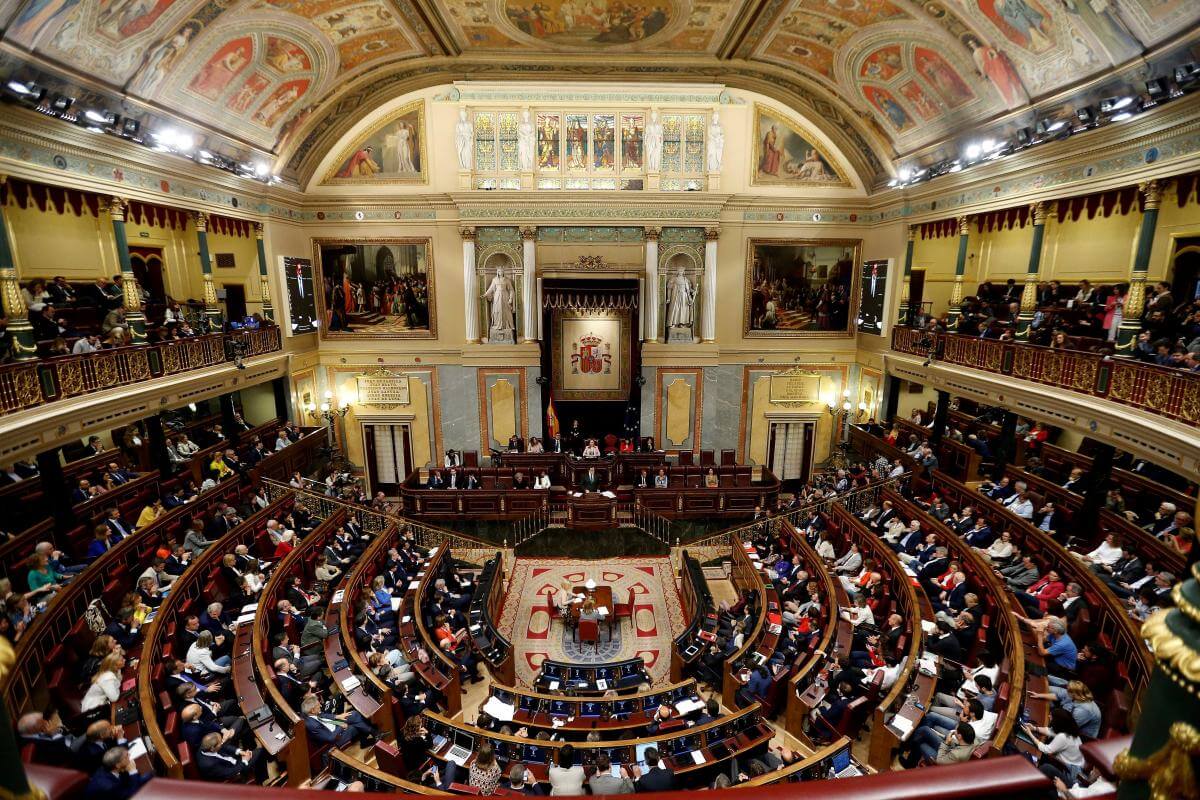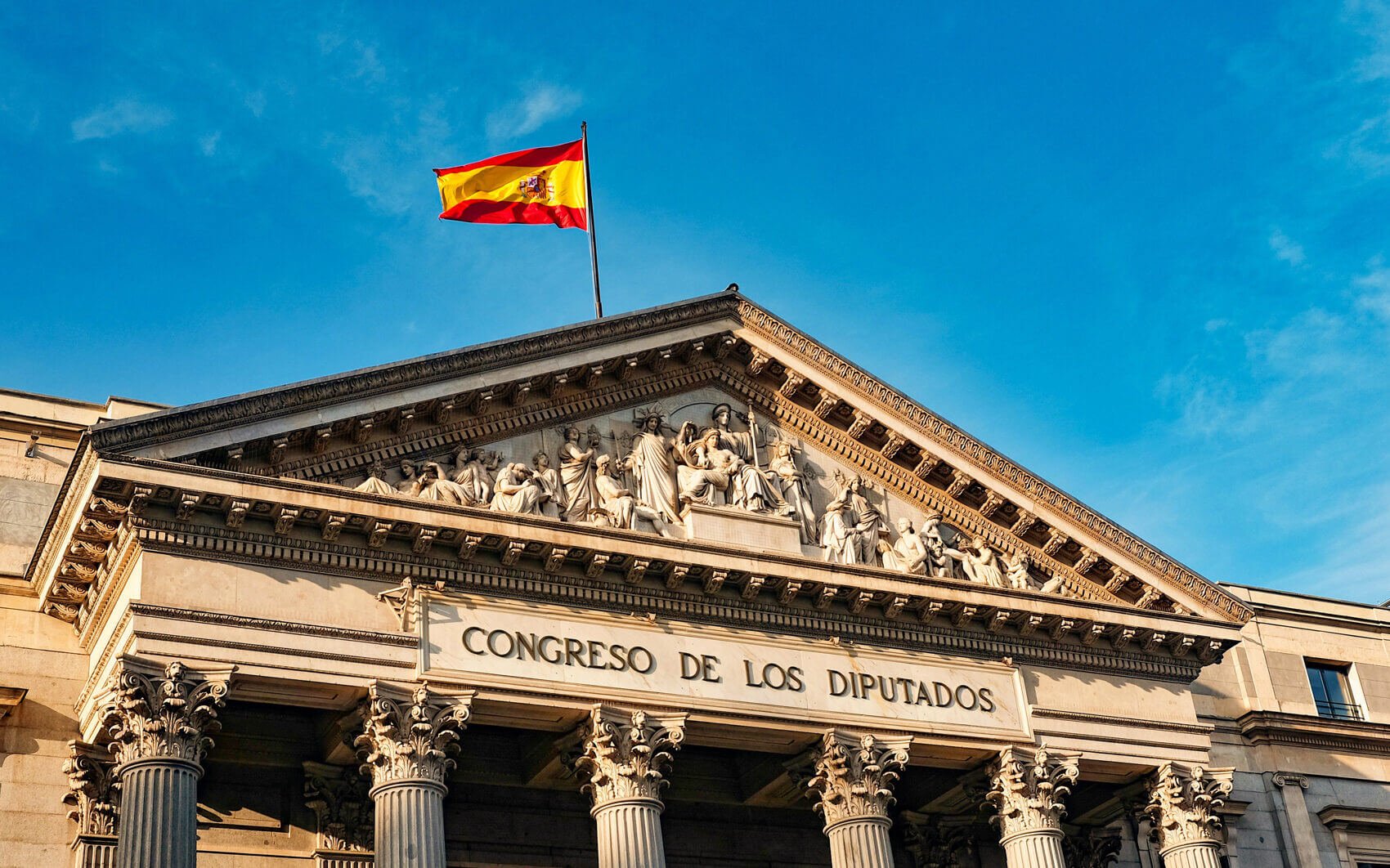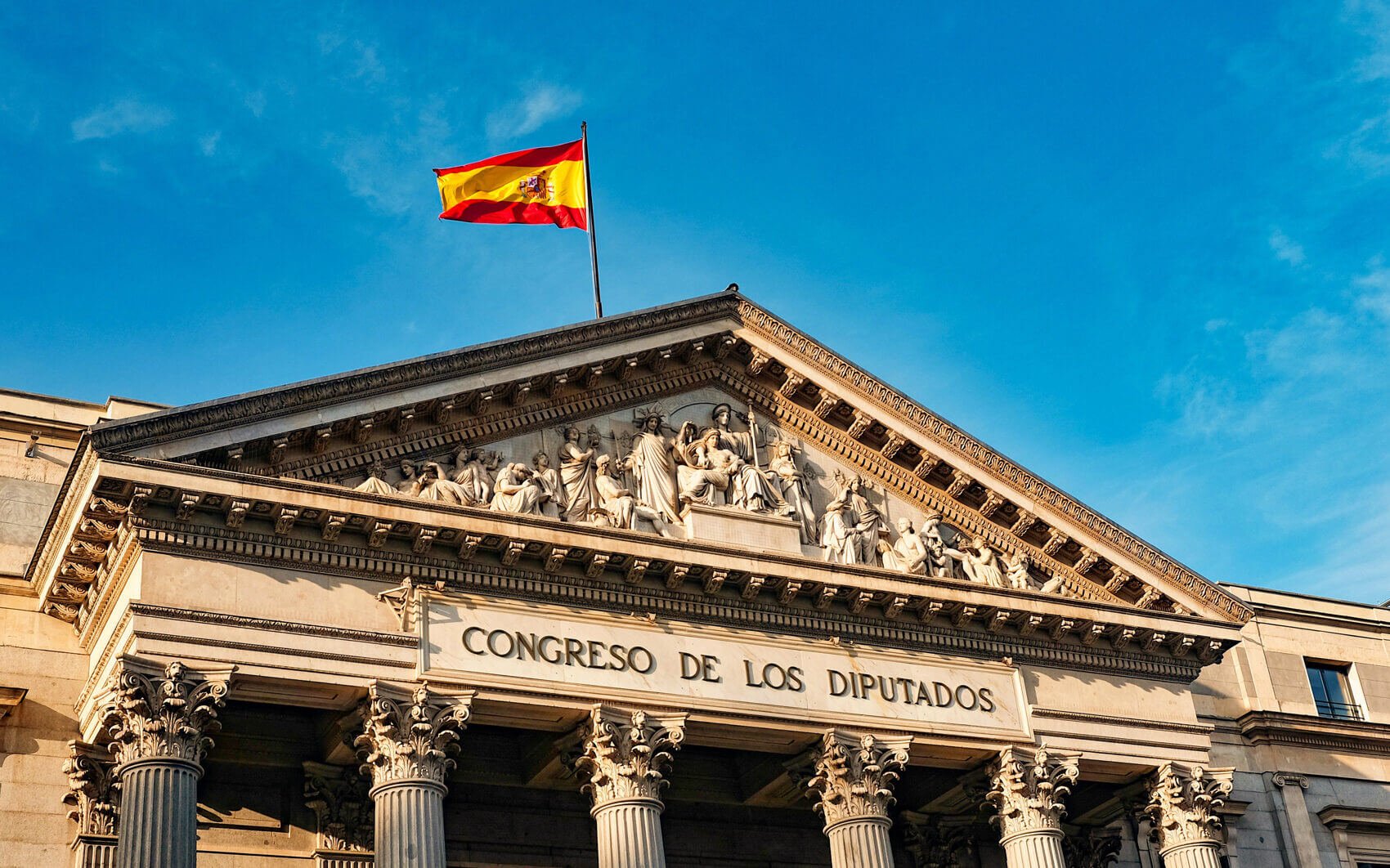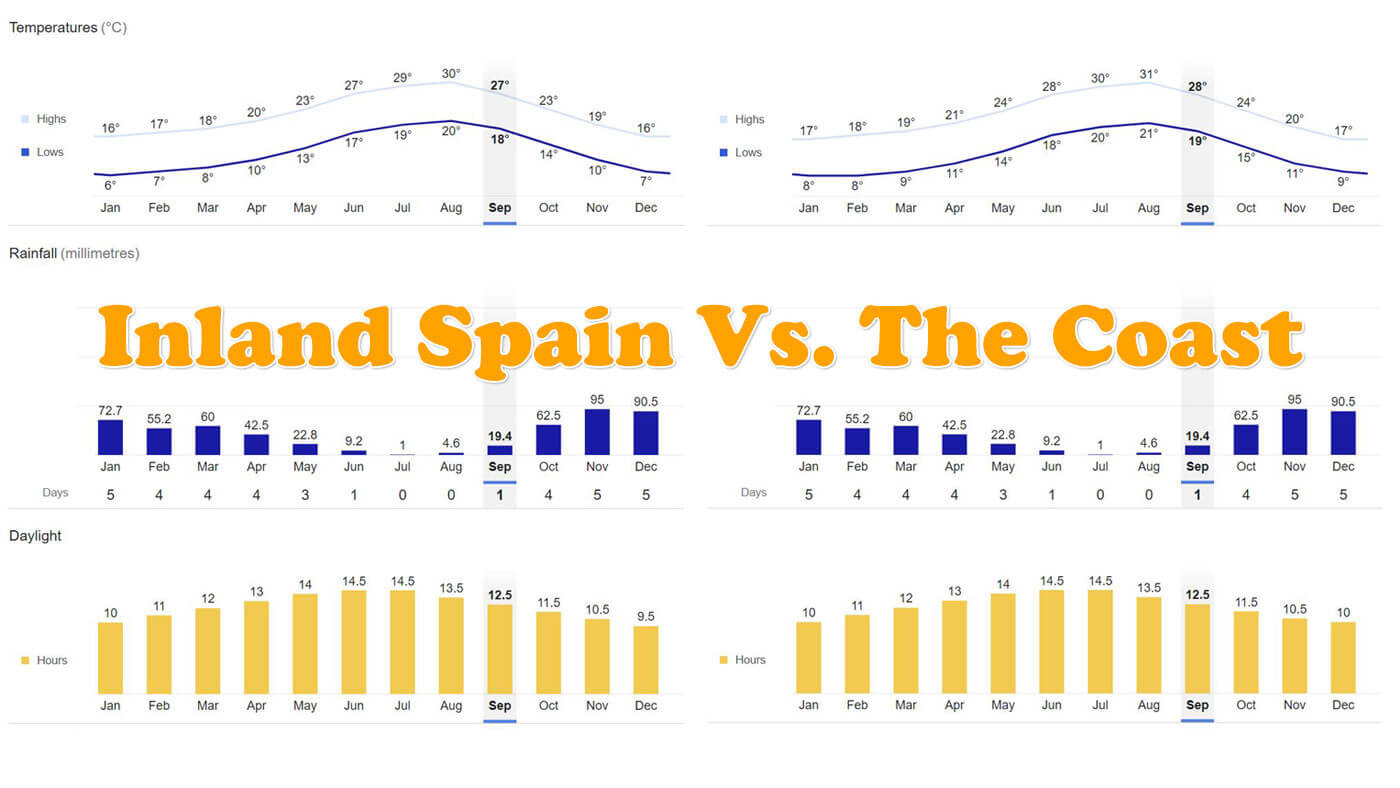Table of Contents
Spanish politics explained: As an expat, understanding Spanish politics and how decisions are made can empower you to participate effectively in your community, ensuring your voice is heard on matters that affect you personally, such as tax obligations and family reunification processes.
This article will explain the key political parties, the structure of the government, and your rights as an expatriate voter. We will also touch on current political topics that are shaping Spain today, providing you with the insights you need to feel informed and engaged.

What are the political parties in Spain, and what do they stand for?
Who governs Spain at the moment?
Pedro Sánchez currently serves as Spain's Prime Minister, leading a coalition government formed with the left-wing Sumar party. Following a parliamentary vote in November 2023, Sánchez received the backing of multiple regional and leftist parties, allowing him to secure the leadership despite opposition from the centre-right Popular Party and far-right Vox. This coalition, while achieving a majority, includes varying political interests, particularly from separatist groups like the Catalan Junts, which influenced the coalition negotiations by advocating for regional concessions and amnesty for Catalan separatists.
The administration faces challenges in maintaining unity across these diverse political stances, with anticipated focus on regional autonomy and progressive social policies as key legislative priorities.  Pedro Sánchez
Pedro Sánchez
What has Pedro Sanchez Spain’s prime minister achieved so far?
Pedro Sánchez, Prime Minister of Spain since 2018 (with a brief period between his terms), has driven significant changes in various policy areas, including social reform, the environment, economic recovery, and Spain’s international standing.
1. Social and Civil Reforms
Sánchez's government has made strides in social policy, notably expanding rights for marginalized groups. His administration passed a law in 2022 permitting gender self-determination, a landmark move within Europe. His policies have also supported LGBTQ+ rights and pushed for progressive changes in women’s rights, including menstrual leave and enhanced protections against gender-based violence.
2. Climate and Environmental Initiatives
Sánchez has placed climate change at the forefront of Spain's policy, implementing ambitious goals for carbon neutrality by 2050. The Green Transition plan seeks to reduce emissions, encourage renewable energy, and allocate significant funds from the European Union's recovery plan toward green initiatives. Spain has become a leader in solar and wind energy under his government, boosting its global position in the renewable sector.
3. Economic Recovery and EU Integration
Facing the economic challenges of the COVID-19 pandemic, Sánchez's government utilized EU funds to stabilize the economy and promote job creation. Through the “España Puede” (Spain Can) recovery plan, he focused on sectors like digital transformation and infrastructure, drawing billions from the EU’s NextGenerationEU fund. His pro-EU stance has strengthened Spain’s influence within the European Union, working closely with other EU leaders to shape Europe’s fiscal and pandemic recovery policies.
4. Handling of Regional Separatism and Catalonia
Sánchez's approach to regional separatism, especially in Catalonia, has been a delicate balancing act. He facilitated pardons for Catalan leaders involved in the 2017 independence referendum and opened a dialogue with regional governments, seeking to foster unity and reduce separatist tensions. His recent collaboration with separatist parties, including proposals for amnesty, continues to generate debate but reflects his strategy of negotiation over confrontation.
5. Healthcare and Education
During the pandemic, Sánchez's government expanded healthcare funding, improved emergency response capabilities, and supported vaccine rollouts across Spain. In education, Sánchez’s government invested in digital infrastructure and support for remote learning, crucial during lockdowns and for Spain's longer-term educational modernization.
In summary, Sánchez’s leadership has marked a progressive turn for Spain, with significant strides in social policy, environmental action, and economic recovery. While his policies face both support and criticism domestically, his impact has positioned Spain as a prominent voice within the EU and advanced various social and economic reforms
Spain’s Diverse political landscape.
Spain’s political landscape is richly diverse, featuring a mix of national parties, each with unique ideologies, goals, and approaches to governance. Major national parties, such as the centre-left Partido Socialista Obrero Español (PSOE) and the centre-right Partido Popular (PP), dominate Spanish politics, often alternating in leadership roles. Recently, PSOE has led Spain under Prime Minister Pedro Sánchez, often in coalition with smaller left-wing parties like Unidas Podemos or Sumar, reflecting the country's progressive leanings on social and economic issues.
On the right, parties like VOX express nationalist and conservative values, while centrists like Ciudadanos promote liberal, pro-business policies. Alongside these national parties, Spain’s robust regional parties—particularly in areas like Catalonia and the Basque Country—advocate for autonomy, with some pushing for full independence. The resulting tapestry of political ideologies highlights Spain’s regionalism and the importance of coalition-building in government, where issues of autonomy, social policy, economic reform, and environmental responsibility are constantly negotiated.

What are the political parties in Spain, and what do they stand for.
Spain has a multi-party system with several prominent national parties and a range of influential regional parties. Here’s a look at the main political parties and their general ideologies:
1. Partido Socialista Obrero Español (PSOE)  Ideology: Social Democracy, centre-left
Ideology: Social Democracy, centre-left
Overview: Spain’s Socialist Workers’ Party, PSOE, is one of the oldest and most influential parties in Spanish politics. It currently leads the coalition government under Prime Minister Pedro Sánchez. PSOE supports progressive social policies, EU integration, environmental reforms, and pro-welfare policies to promote social equality.
2. Partido Popular (PP)  Ideology: Centre-right, Conservative
Ideology: Centre-right, Conservative
Overview: The Popular Party (PP) is Spain’s main conservative party, historically favouring market-friendly policies, a strong stance on national unity (especially in relation to Catalonia), and traditional values. PP supports economic liberalization, lower taxes, and limited government intervention. Led by Alberto Núñez Feijóo, PP often opposes PSOE’s social reforms and advocates a pro-business approach.
3. VOX  Ideology: Right-wing to far-right, nationalist
Ideology: Right-wing to far-right, nationalist
Overview: Founded in 2013, VOX has quickly grown, promoting a strong nationalist agenda, opposition to Catalan independence, and resistance to immigration. Known for its stance against gender equality legislation and progressive social policies, VOX also champions traditional family values, national sovereignty, and Euroscepticism, attracting support from conservative and nationalist voters.
4. Unidas Podemos (UP)  Ideology: Left-wing, democratic socialism
Ideology: Left-wing, democratic socialism
Overview: Unidas Podemos is an alliance of leftist parties, including Podemos and United Left. The coalition advocates for anti-austerity, environmental sustainability, and social justice, and has pushed for wealth redistribution, workers' rights, and policies to combat inequality. It has played a key role in advancing Spain’s recent progressive social policies as a coalition partner with PSOE.
5. Ciudadanos (Cs)  Ideology: Centre to centre-right, liberal
Ideology: Centre to centre-right, liberal
Overview: Founded as a centrist party opposing Catalan nationalism, Ciudadanos expanded nationally, advocating economic liberalism, social centrism, and government transparency. However, in recent years, it has struggled electorally and lost much of its political influence, though it remains supportive of European integration and business-friendly policies.
6. Sumar 
Ideology: Broad left-wing coalition, social democratic to eco-socialist
Overview: A new left-wing platform led by Yolanda Díaz, Spain’s current Deputy Prime Minister, Sumar (which means "to add" in Spanish) encompasses various leftist groups and individuals. It prioritizes labour rights, climate action, and social policies to address inequality. Sumar has joined PSOE in a coalition government, though it is distinct from Podemos and maintains a focus on worker-centric and green policies.
7. Regional Parties
Spain’s regional parties have significant influence, especially in Catalonia, the Basque Country, and Galicia:
Esquerra Republicana de Catalunya (ERC): A pro-independence left-wing party in Catalonia advocating for Catalan autonomy.
Junts per Catalunya (Junts): Another Catalan independence party, right-leaning, with a focus on Catalonia's self-determination.
Partido Nacionalista Vasco (PNV): A Basque nationalist, centre-right party supporting greater Basque autonomy within Spain.
EH Bildu: A Basque left-wing pro-independence coalition pushing for socialism and self-determination.
Each party plays a role in Spain’s dynamic political landscape, reflecting a broad spectrum of ideologies and regional interests that frequently impact the coalition-based nature of Spanish governance.
How many municipal governments in Spain
Spain has over 8,100 municipalities, which serve as the core administrative units within its local governance structure. Each municipality is generally led by an ayuntamiento (municipal council), with a mayor who manages local affairs alongside council members. These municipalities vary in size and population, with larger cities like Madrid and Barcelona encompassing multiple districts, and smaller villages often following simpler, open-council systems, especially in less populated areas.
Additionally, Spain’s provinces—of which there are 50 on the mainland—group multiple municipalities together, providing regional oversight through diputaciones provinciales (provincial councils) or equivalent regional bodies. These councils handle broader services like infrastructure and cultural projects that affect multiple municipalities within the same province. In some regions, particularly in the Balearic and Canary Islands, provincial councils are replaced by island councils due to geographic considerations, focusing on island-wide governance.
Spain’s local governance is multi-layered, with municipal, provincial, and regional entities working together under frameworks designed by both national and autonomous community laws. This layered structure is intended to address the needs of Spain's diverse territories, from rural communities to urban centres, and reflects the country's commitment to decentralized administration.
Providing detailed information on each of Spain's 8,131 municipalities would be extensive, as each municipality has unique demographic, administrative, and geographic details. To find information for specific municipalities, you may want to consult resources like Spain’s National Institute of Statistics (INE), which provides comprehensive profiles for every municipality, or the local government websites for provinces or autonomous communities, which offer administrative and historical details.
For research by province or autonomous community, you can also refer to sources such as:
Spain’s Ministry for Territorial Policy: Offers insights on governance structures and updated listings of all municipalities by region.
Local and Provincial Council Websites: Many provincial websites maintain databases with details about the municipalities within their jurisdiction, including services, historical context, and local governance. LIVING IN THE E.U The European way of digital transformation in cities and communities
An example of a few of Spain’s municipal governments
Here is an example of several municipal governments in Spain, each showcasing unique regional characteristics, governance structures, and local issues:
1. Madrid (Community of Madrid)
Overview: Madrid, Spain's capital, is governed by a large municipal council that oversees multiple districts, each with local councils. The Ayuntamiento de Madrid manages public services, transportation, cultural programming, and urban planning.
Mayor: José Luis Martínez-Almeida (as of recent elections), representing the Popular Party (PP).
Challenges: With a high density, Madrid faces complex issues like air pollution, traffic, housing shortages, and public transit expansion to accommodate its population.
2. Barcelona (Catalonia)
Overview: Barcelona’s municipal government is known for progressive policies, particularly in urban planning, cultural preservation, and tourism management. Its city council, the Ajuntament de Barcelona, oversees distinct neighbourhoods with unique cultural identities.
Mayor: Jaume Collboni (recently elected), representing the Catalan Socialist Party.
Challenges: Balancing tourism with local quality of life, addressing housing affordability, and managing urban green space initiatives are major priorities.
3. Seville (Andalusia)
Overview: As the capital of Andalusia, Seville’s municipality focuses on preserving its rich heritage and supporting its tourism-based economy. Seville’s Ayuntamiento also addresses local urban planning, cultural programming, and river management along the Guadalquivir River.
Mayor: José Luis Sanz, representing the Popular Party.
Challenges: Water management, promoting sustainable tourism, and developing infrastructure for rapid urban growth are current priorities.
4. Bilbao (Basque Country)
Overview: Bilbao has transformed from an industrial hub to a centre for art and design, supported by its municipality’s focus on cultural investment and sustainable urban planning. The city council has been crucial in promoting initiatives that made Bilbao a symbol of urban renewal.
Mayor: Juan Mari Aburto, from the Basque Nationalist Party (PNV).
Challenges: The city continues to manage its post-industrial transition, focusing on sustainable development and balancing the economy between tourism and technology sectors.
5. Valencia (Valencian Community)
Overview: Valencia’s municipal government works to balance tourism, agriculture, and industry. Its local policies support innovation in environmental sustainability and aim to improve public spaces and urban infrastructure.
Mayor: María José Catalá, of the Popular Party.
Challenges: The city faces issues like coastal management, promoting green urban spaces, and maintaining a balance between modernization and preserving its historical areas.
Each of these examples highlights how Spain’s municipalities, while diverse, play a pivotal role in adapting to local and regional needs within the country’s broader governance framework.
Spain’s municipalities play a vital role in balancing local needs with regional and national priorities. From Madrid's bustling capital to the heritage-rich streets of Seville and Bilbao’s industrial transformation, each city offers a distinct approach to governance that reflects the diversity within Spain’s administrative system. These local governments tackle unique challenges, from managing high-density tourism in Barcelona to fostering economic renewal in Bilbao, yet all work within the broader goals set by Spain’s decentralized structure.
The various municipal councils demonstrate the significance of regional representation and local adaptation, showing how Spain’s political framework is designed to address diverse needs across its autonomous communities. This complex system allows each municipality to focus on its local challenges—whether they involve tourism, sustainability, housing, or economic growth—while still contributing to the shared prosperity and identity of the nation. In doing so, Spain’s municipal governments illustrate the effectiveness of local governance in fostering resilience, innovation, and cultural preservation across the country's rich landscape.





